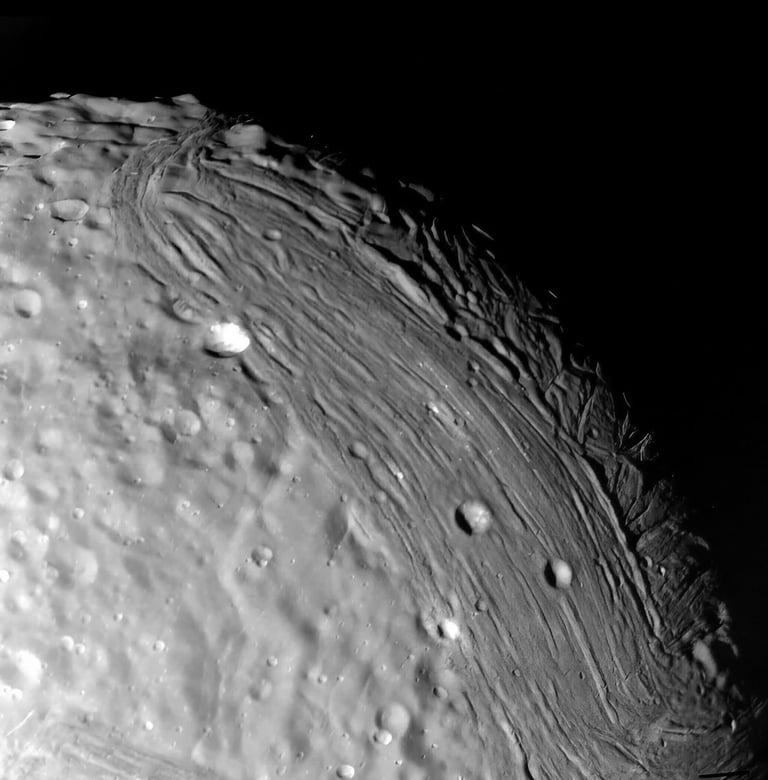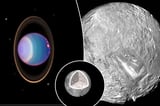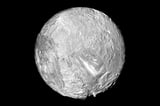Miranda's Hidden Ocean: Uranus Moon May Harbor Vast Subsurface Water, Study Reveals
October 30, 2024
A recent study has revealed that Miranda, a moon of Uranus, may harbor a subsurface ocean, challenging earlier beliefs about its geological history and composition.
Tidal interactions with nearby moons could provide the necessary heat to sustain this ocean, akin to the tidal heating observed on Europa, one of Jupiter's moons.
This finding builds on previous NASA research from 2023, which investigated other moons of Uranus for signs of subsurface water.
The study suggests that Miranda could possess a crust approximately 8 miles thick, potentially supporting an ancient subsurface ocean that would be significant compared to Earth's Mariana Trench.
Surprisingly, this ocean could make up nearly half of Miranda's total volume, according to the research team.
The absence of surface cracks, which would typically indicate the expansion caused by a frozen ocean, lends support to the hypothesis of a subsurface ocean.
Miranda features a complex surface with craters, rough scarps, and grooved regions, including Verona Rupes, the tallest cliff in the Solar System at 20 kilometers high.
Despite being often overlooked, Uranus was designated a top priority for exploration by the National Academies of Sciences in 2022 due to its unique characteristics.
The study, conducted by scientists from Johns Hopkins University and the University of North Dakota, was published in The Planetary Science Journal.
Using modern modeling techniques, scientists have re-evaluated data from Voyager 2, uncovering evidence of a potential liquid ocean layer beneath Miranda's icy crust.
Researcher Caleb Strom highlighted that understanding the conditions for icy moons to become ocean worlds is essential for assessing their habitability.
While there are currently no plans for a dedicated mission to Miranda, these findings could motivate future exploration of the moon.
Summary based on 8 sources
Get a daily email with more Science stories
Sources

New York Post • Oct 30, 2024
Uranus' moon could be home to aliens — scientists reveal 'bizarre' new find
Gizmodo • Oct 30, 2024
Astronomers Found Something Cold and Wet Near Uranus
TechSpot • Nov 1, 2024
Uranus moon Miranda may harbor a hidden ocean, raising prospect of extraterrestrial life
Space • Nov 1, 2024
Small moon of Uranus may have once had a subsurface liquid water ocean